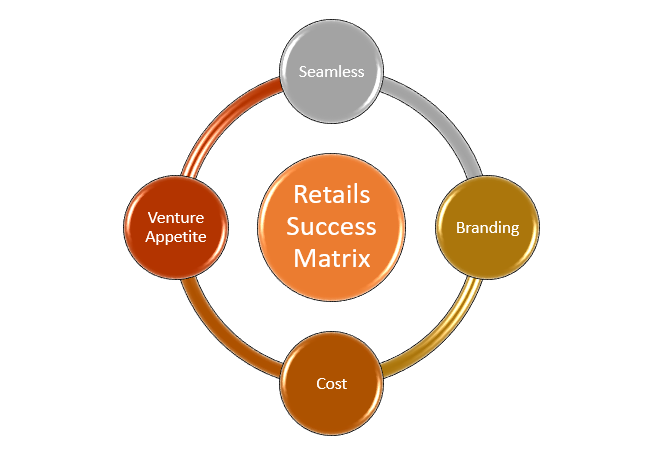In this blog we will be highlighting some of practices which can be effectively used by new retailers to establish themselves in so called most disruptive times in the retail history. From last 2 decades fundamentals of retail have been dynamically impacted due to handshake of retail with technology which is also described as digitalization of retail or e-commerce.
If in mortar and brick times Walmart was clear leader in retail revenue its now Amazon from last decade who is most valuable brand in retail if we look into digital side of revenues. From last few years many retailers were slow to under stand this shift in retail industry which resulted in either diminishing of brands such as JC Penny etc. or completely falling into bankruptcy which include brands such as Toyrus etc. On the other side brands are struggling to find balance between exposure and luxury as new generation is seeking transparency in cost vs quality ratio which is been exposed by emergence of digital platforms.
If we want to categorize the retail success into four metrics we can call them out as:
Seamless Experience – How easily a customers can try stuff or order it without any major resistance or hinderance.
Branding – How much branding a retailers is able to bring to the product.
Cost – What type of cost proposition is the retailer providing ?
Venture Appetite – How much experimentation can be done by the retailer and how customers are receiving it ?

It is not sufficient to be good in one of the above metrics. One need to maintain above average in two or more metrics to compete in these times of retail era. Lets try to elaborate each metrics and try to observe what different industry leaders are doing in each of the key metrics.
Seamless Experience – From the day Amazon.com was launched every one was really impressed by their one click order feature. Brands such as Amazon, Walmart, Target are having enormous amount of user data & they are leveraging data mining and Machine learning to extract behavior up to individual level which indeed can be beneficial to provide recommendation customers are looking for. Automatic checkout counters have been rolled out by almost all big retailers to reduce the wait times in shops.
As a new retailer one can argue about big investments in technology to get these trends and analysis but now companies like Google are helping retailers with target audiences marketing strategies & unlock access to all those trends. E-commerce platform such as Shopify are providing all in one integration from SEO to POS solutions.
Seamless is not future it is ongoing metrics. It does not only go with outgoing transaction but also with returns. Few brands provide great return policies which result in exponential increase in customer loyalty.
The bottom-line is about resistant less approach of business. If retailers lack in this metrics it can hurt any new business big time.
Cost is major driver of business growth if retailer is not into luxury quadrant. As retailers are saving huge amount of capital in supply chain cost by directly indulging with the customers , the savings can be trickle down to the customers which some time make digital giants really hard to compete with. As shelf time of product is decreased significantly due to smooth supply chain management, wastage is reduced. As now digital transformation expose multiple venue to sell the product which bring in sellers around the global using same platforms which fetches aggressive cost value to end customers.
New retailers need to understand that if business is more cost focused constant programs such as everyday low prices, loyalty rewards etc need to floated.
Branding is one area which can be leveraged with great success against blue chip retailers. In spite of highly disruptive decade brands such as Sephora, Tiffany’s etc. are able to preserve the brand value. And continue to grow at average 5% because of people who believe in real luxury in brand. Customer experience become most valuable asset for Luxury brands and retails used methods of crowd control in their stores to make sure each customer experience it.
This does not means branding don’t think of digitalization. But they don’t over inventory any model. Few stores such as Zara provide items which are only available for may be a week and customers are inclined to make decisions on the spot as next visit may not guarantee the product to them.
Appetite to experimentation is directly proportional to success in retail industry. Recent merger of Walmart including Store No 8 & Jet.com show its thirst in growing digital presence. Amazon merger of Whole Foods open new market of grocery for Amazon and also a progressive step towards its 30 mins delivery dream. Brands such as Spirit Halloween open pop up stores and these stores are real revenue generator for them. For new retailer collaboration is the word. One cannot port or invent the wheel, startups need to be smart. New retails need to cross the barrier of 100 million and redesign the thinking of retail success which is moving away from traditional metrics such as per square meter revenue.
Contactless shopping is not only the buzz word from last year but will remain important KPI in retails for next decade. Without being experimental one can’t achieve frictionless standards.
Conclusion: Retail industry is definitely going through digital transformation which bring a unique challenge to new retailers. But there is positive side to it with new retailers coming up with new subscriptions models to cope with next generation of savvy customers who want to leverage technology for every order. There are multiple socio-economic trends as well which need to be accounted for. Developed countries are over-stored and store brands need to restructure quickly to
keep themselves relevant in these changing dynamics.
